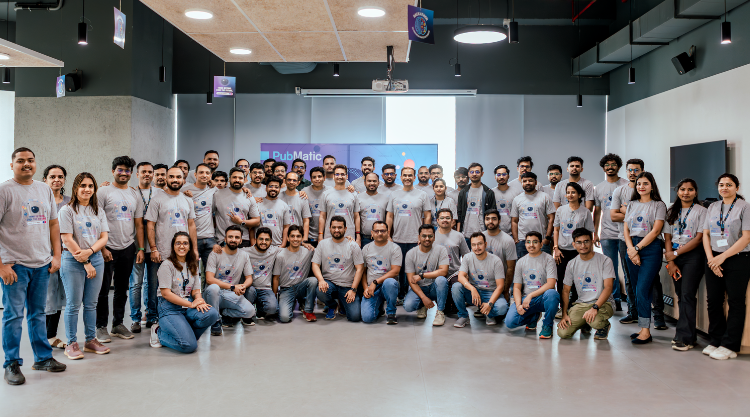The Role of Technology
Last week we looked at the role of the consumer in today’s digital age, with the consensus being that the complete ‘brand’ experience has never been more important. Consumer interaction with technology has transformed, with more channels to consume media from, across several platforms, from a multitude of devices. This has led to a lack of loyalty from consumers, and a growing importance for publishers to deliver the right experience for their audience.
If a consumer experience is negative – whether it is from low quality content or disruptive, irrelevant advertising – they have the option to go elsewhere. It is vital that publishers and advertisers work collaboratively to truly understand their audiences to deliver relevant content without disruption.
But how? Our third and final blog post covers the discussions around the role of technology in the world of digital publishing.
“Find the right talent”
According to comScore, there are now more mobile users than desktop users worldwide. This shift to digital has impacted industries across the board, but possibly none more so than publishing – an industry that has advanced dramatically in the past few years, with a record £7.2 billion spent on digital marketing in 2014 alone.
In order to leverage this opportunity, publishers have to adapt their content strategy to meet the demands of the real-time, heavily targetable nature of digital advertising and the consumer expectations that come with it. They now require marketing automation technology that will enable them to harness data and manage their sales, pricing, packaging, and go-to-market efforts strategically and at scale.
However, with any organisation hoping to thrive by utilising technology, it must consider the talent it requires to run such a machine. In order to deliver the right audience experience and, as a consequence, to realise the full potential of their digital assets, the publishing industry must re-think what it looks for in the ‘ideal employee’.
The three most important traits of the ideal employee are:
- Understanding of tailored content
To drive traffic to and from sites, the content needs to be targeted and relative to that channel. A digital publishing employee will have a thorough understanding of what content is applicable and most successful with each channel. For example, content appropriate for LinkedIn might not be appropriate for Twitter and Facebook and vice versa.
- Understanding of devices
Each device sees success with varying types of content and demographics. Consumers now expect different content when they are on mobile vs when they are on desktop, and those working in this space need to have a thorough understanding what works where.
- Data analysis and interpretation
With the rise of programmatic technologies, the gathering of data to provide informative evaluations is now crucial to any successful media campaign. Having the skilled talent to analyse and interpret this data effectively offers publishers the actionable insight they require to remain competitive.
Publishers need to broaden their search parameters to source the talent that has relevant transferable skills enabling them to digest and analyse the real-time data that strategic decisions can be built upon. Such skills can be found from talent in sectors as diverse as the airplane industry to financial services, which according to Forrester’s real-time analytics report, has been using real-time analytics data since 2008.
“Know your audience”
The underlying theme of the entire dinner was that publishers – and advertisers – need to know their audiences. Publishers must adapt their approach to deliver more engaging and relevant content to consumers, without disruption.
While mobile real-time GPS information used to be the talking point of data collection, it’s no longer only about understanding where the user is. Publishers and advertisers do not simply need to know that a consumer is 100 metres from Starbucks, they need to understand who that person is in order to deliver relevant content to them – do they regularly visit the area, what they do when they are there, are they likely to be there for work or leisure? Monetising mobile advertising is all about being able to understand who a consumer is and then being able to deliver relevant and timely ads based on that.
Publisher appetite for data and actionable insights continues to increase. It was agreed that the most effective way to understand an audience is through real-time analytics which ensure publishers have their fingers on the pulse of market trends and can make decisions accordingly – such as what content to place where, on what device and when.
By utilising that information, publishers can ensure customer satisfaction, boosting brand loyalty. However, targeted and relevant content is not the only contributing factor to consumer loyalty – the experience must remain undisruptive.
“Ads annoy people. Enter stage left: ad blocking”
Consumers find some ads annoying and intrusive, and developers are seizing the chance to write software that prevents ads from loading. Today, pop-up blocking is a standard feature of every major Web browser, and pop-up ads are relatively rare.
Advertising is the leading business model for the Internet. However a recent rise in ad blocking applications has highlighted the issue of untailored and untargeted advertisements and that cannot be ignored. The deterioration of the user experience has opened up the possibility for ad blockers to chip away at publishers’ revenue. This doesn’t have to be the case, the industry can and is innovating its way out of this problem.
Publishing can do this by investing in great user experiences – content offerings that are cleanly designed and perform well. And we can get there by reducing and optimising the number of point solutions publishers rely on, with an eye towards speedier, more reliable sites and apps. We can move toward more integrated marketing solutions that give publishers greater authority and control. All these things will add up to experiences that capture and keep consumers’ attention. And if the experience is great, they won’t need or want a blocker to fix it for them.
“Look back before looking forward”
As we move towards a digital-first world, there is no doubt technology will play an increasingly fundamental part in the success of publishing. So in response, publishers need to plan and strategise – not just for the next five years, but ten, twenty, thirty years into the future. Who will their audience be then? How will they consume media? Will it need to be completely personalised, curated and targeted? It’s not about predicting the future, but about taking a step back and looking into the past. Consider the trends from yesteryear and plan for five or six different future outcomes.
Utilising technology and real-time tools is the only way to gain such insights and plan strategically for the future world of publishing.
Here’s to the next one
The influencer dinner was naturally deemed a great success by all those involved. The top-level debates that arose between experts in each of their fields proved valuable in analysing the different point of views from each sector of the digital publishing industry and it was not surprising to hear many participants are already looking forward to the next one.





